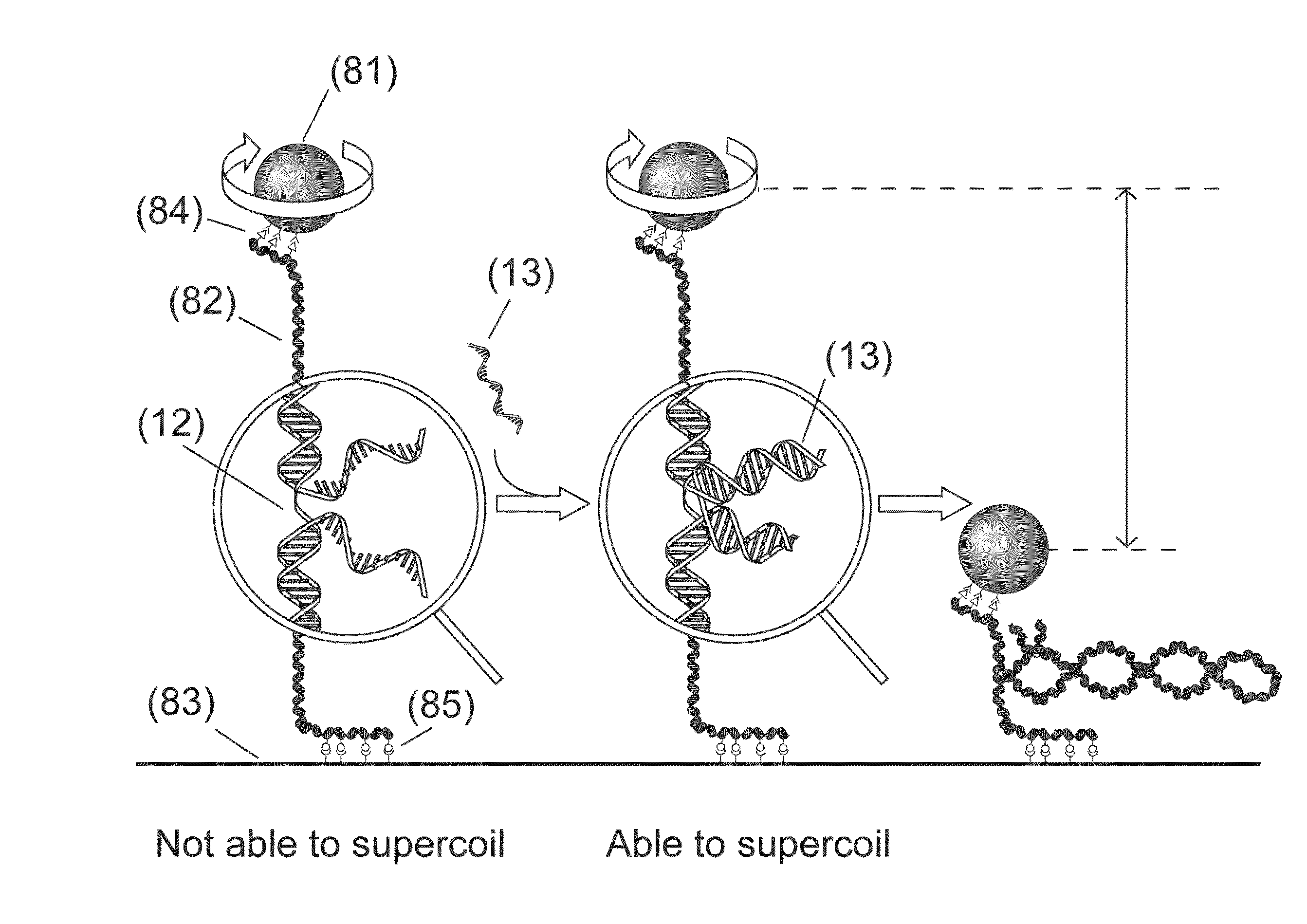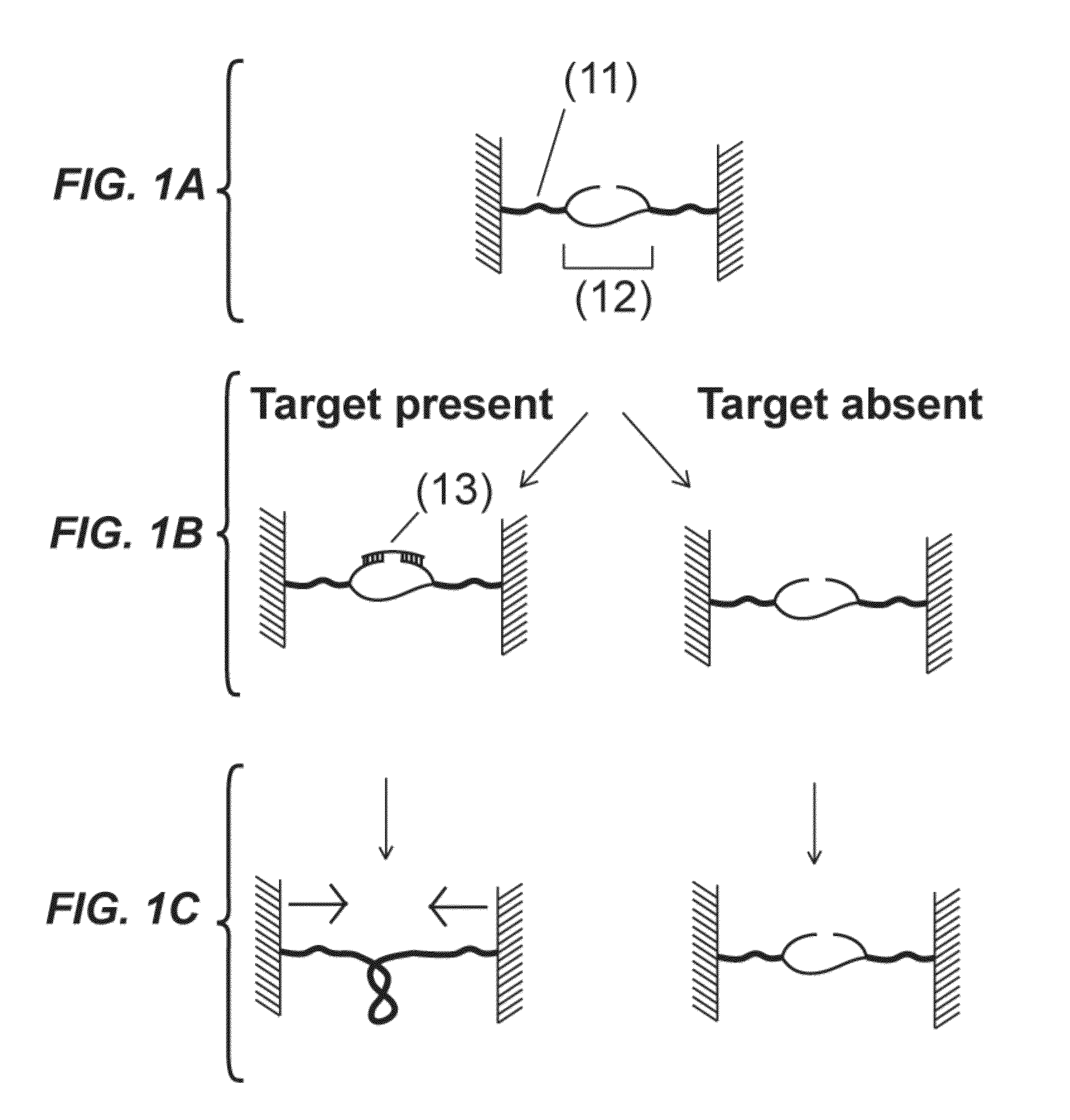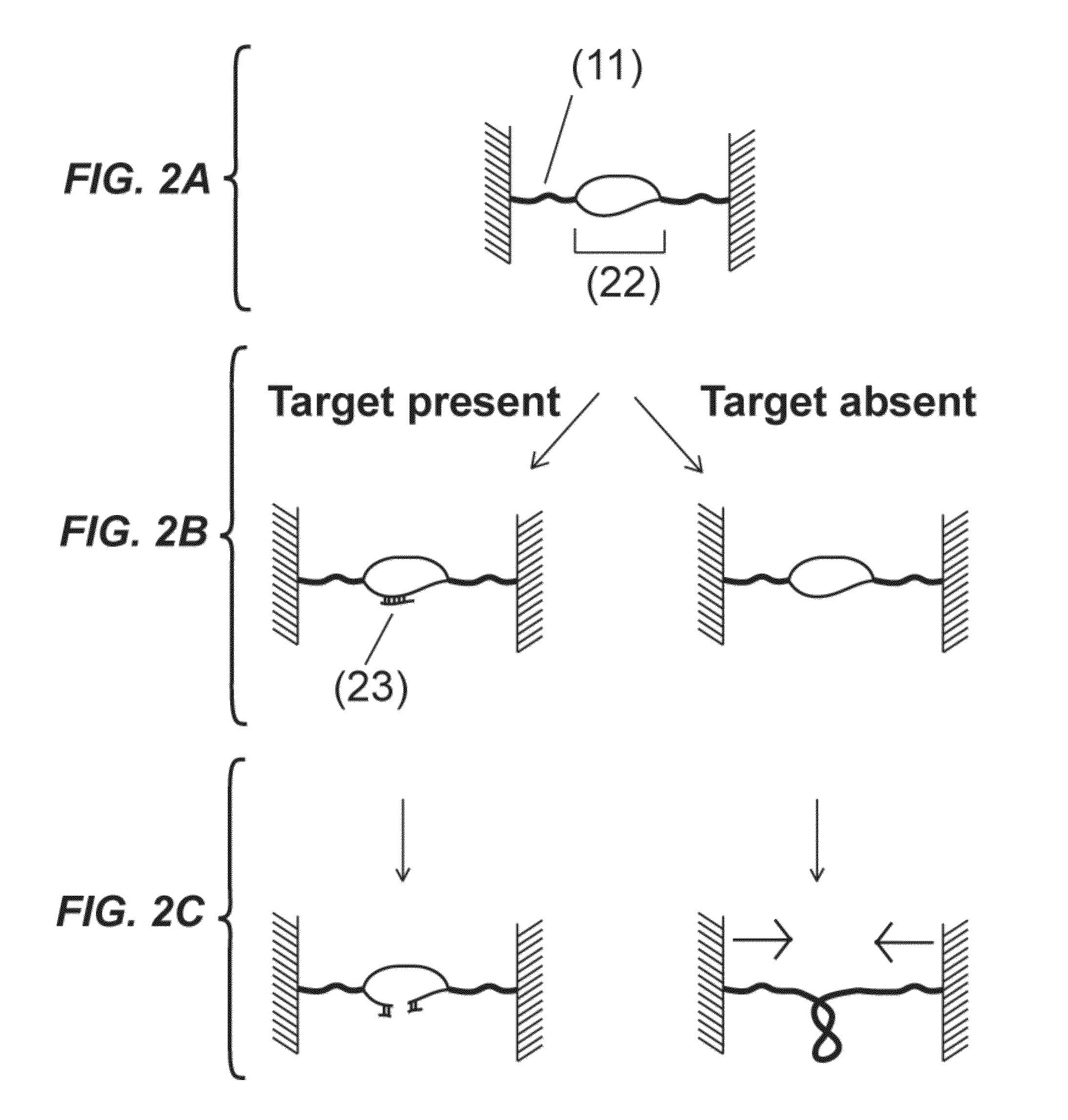Detection units and methods for detecting a target analyte
a detection unit and analyte technology, applied in the field of detection units and methods for detecting targets, can solve problems such as difficult detection
- Summary
- Abstract
- Description
- Claims
- Application Information
AI Technical Summary
Benefits of technology
Problems solved by technology
Method used
Image
Examples
example 1
[0148]Disclosed is a strategy to detect oligonucleotide analytes. In this exemplified detection technique, the hybridization of the target analyte to a DNA molecule restores the capacity of the DNA molecule to supercoil. The detection unit in this example includes a double stranded DNA molecule (dsDNA), 2.5 μm long, attached at one end to a glass surface and at the other end to a 1 μm magnetic bead—a configuration used in magnetic tweezers experiments (see Strick et al., Science 271, 1835-1837 (1996); Celedon et al., Nano Lett 9, 1720 (2009)). (FIG. 9A). A magnetic field pulls the bead away from the glass surface extending the DNA molecule. The DNA molecule has a discontinuous strand and therefore is not able to supercoil (Voet et al., Biochemistry. 4th edn, John Wiley & Sons, Inc., Hoboken, N.J., USA, 2011). The two unpaired overhangs at both sides of the discontinuous strand are each complementary to adjacent regions of the target molecule. Hybridization of a target molecule to bo...
example 2
[0158]This example discloses a method to detect the presence of nanorods contacting a flat surface. The method can be used to detect supercoiling of a DNA molecule if the molecule is previously attached at one end to a nanorod and at the other end to the flat surface.
[0159]The presence of nanorods contacting a gold pattern was detected from the drop in electrical resistance between gold stripes (FIG. 10). A resistance change from 1-10 GΩ in the absence of a bridging nanorod to 30-40 kΩ in the presence of a nanorod was measured. Simple hand held testers can detect this resistance change.
[0160]Nanorods were prepared by electrodeposition into the 200 nm diameter pores of an aluminum oxide template membrane (Whatman, Springfield Mill, Kent, England), similar to previously published protocols. (Celedon et al., Nano Lett 9, 1720 (2009)) The nanorods formed by filling the pores of the membrane by the deposited material. Segments were deposited by changing the electrolytic solution. The tem...
example 3
[0162]This example discloses a method to detect the presence of a particle in the vicinity of an array of light sensors, such as complementary metal-oxide-semiconductor (CMOS) and charge-coupled devices (CCD), normally used in digital video cameras. The method can be used to detect supercoiling of a DNA molecule if the molecule is previously attached at one end to a particle and at the other end to the surface of the sensor.
[0163]The presence of 1 μm beads (Myone, Life Technologies) was detected on the surface of a CCD camera. Beads were placed directly on the surface of the sensor. A 2 μl drop of solution containing the beads was placed on the surface. After few minutes, the water in the solution had evaporated and an image of the surface of the sensor was obtained using an optical microscope (FIG. 11A), showing a large number of beads on the surface. The sensor was then introduced in a sealed box having only one small hole through which light from a light-emitting diode (LED) ente...
PUM
| Property | Measurement | Unit |
|---|---|---|
| diameter | aaaaa | aaaaa |
| diameter | aaaaa | aaaaa |
| resistance | aaaaa | aaaaa |
Abstract
Description
Claims
Application Information
 Login to View More
Login to View More - R&D
- Intellectual Property
- Life Sciences
- Materials
- Tech Scout
- Unparalleled Data Quality
- Higher Quality Content
- 60% Fewer Hallucinations
Browse by: Latest US Patents, China's latest patents, Technical Efficacy Thesaurus, Application Domain, Technology Topic, Popular Technical Reports.
© 2025 PatSnap. All rights reserved.Legal|Privacy policy|Modern Slavery Act Transparency Statement|Sitemap|About US| Contact US: help@patsnap.com



